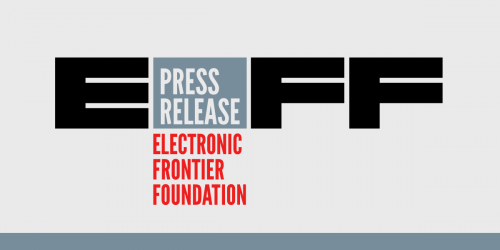Video is an enormous part of the Internet today. At least two thirds of all Internet traffic is streaming video. YouTube is the third most-visited website in the US and the world, and its users add a mind-boggling 300 hours of new content every minute—dwarfing the video produced for broadcast or cable television. And unlike television, online video came into being without government oversight, all due to one important neutral platform for innovation—the Internet. So we should be inclined to think very carefully before subjecting Internet video streaming to new regulation, as the FCC (Federal Communications Commission) proposed in a Notice of Proposed Rulemaking that closed last week, and in which EFF posted a comment.
The proposed rulemaking suggested forcing certain types of online video providers to follow a set of rules created for cable and satellite TV systems under the Communications Act, known as the Multichannel Video Programming Distributor (MVPD) rules. Those rules give video system operators a series of rights and responsibilities. The FCC proposed to apply the MVPD rules to all Internet video services that offer multiple streams of programmed content to which paying subscribers tune-in, but not to those that offer programs that the user can select on demand. The Notice of Proposed Rulemaking doesn't give any good examples of this, but EFF identified one in our comment—Ustream, which allows subscribers to watch multiple channels of advertisement-free content to users who take out Premium Membership.
The FCC's existing MVPD rules were meant to address some such market failures that exist for traditional TV services, such as the limited availability of spectrum for over-the-air broadcasts and the perverse incentives for owners of broadcast content to discriminate in whom they offer that content to for retransmission. MVPD status addresses the latter concern by allowing broadcasters to bargain for access to broadcast channels on non-discriminatory terms, through a process called “retransmission consent”, which works in tandem with a statutory license over the copyrighted works in that content. In exchange, MVPD status carries certain responsibilities such as the requirement to carry certain local programming, and to provide closed-captioning.
Not all of the same competitive arguments apply online. The Internet's capacity to carry multiple competing streaming video services scales much more readily than traditional broadcasting services do, with their requirements of dedicated facilities and expensive equipment. Internet video streams also have much broader geographical coverage than traditional broadcasts. This makes some of the responsibilities that come with MVPD status irrelevant, such as the local programming requirement (after all, what qualifies as a “local” channel for an Internet video service that streams its content to the whole world?).
The issues of discriminatory access to broadcast content do remain. For many Internet video services, this is unimportant; they carry original content or cable channels, not broadcast channels. Retransmission consent requirements, far from making things easier for these services, might actually impede them, by making them bargain for access to content that is not protected by copyright. This is a concern that we have raised in the context of international negotiations for a new Broadcasting Treaty—for which the FCC's proposed rules, if extended to Internet services, might lay the groundwork.
On the other hand, there are other Internet video services that might seek to offer consumers new options for access to the content they already receive through cable or over-the-air broadcasts, for which the option of the retransmission consent process might be useful. Today, FCC rules give cable and satellite providers easier access to broadcast channels on a fair basis, while Internet-based services often can't get access to broadcast channels at all (think Aereo). Therefore in our comment to the FCC, we suggest that providers be given the option: either to remain unregulated as they are at present, or to opt-in to the MVPD regulatory regime in exchange for the right to access broadcast content on the same preferential terms that cable systems enjoy, while also shouldering some of the same responsibilities as those systems.
An opt-in for Internet-only video services should not affect traditional cable and satellite systems that now have MVPD status, even if they also transmit over the Internet. They should continue to hold the same status regardless of the means of transmission that they choose, and shouldn't be able to shirk their existing responsibilities because they also offer their programming online.
Whether online or offline, video content is a form of expression protected by the First Amendment. This provides the context for regulating any medium for the transmission of such content, and as our comment to the FCC explains, this means refraining from encumbering Internet video platforms with new regulations. Except for the fact that access to broadcast content for Internet streaming services could be improved—something that could be done by providing them with opt-in access to MVPD status—EFF believes that the best way to ensure a competitive, innovative Internet video marketplace is to leave it pretty much alone; which is, after all, how it got where it is today.







